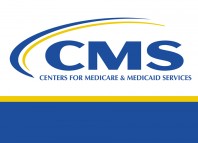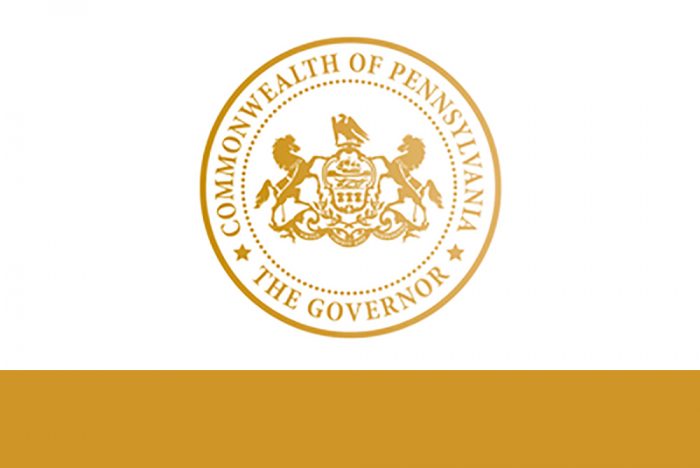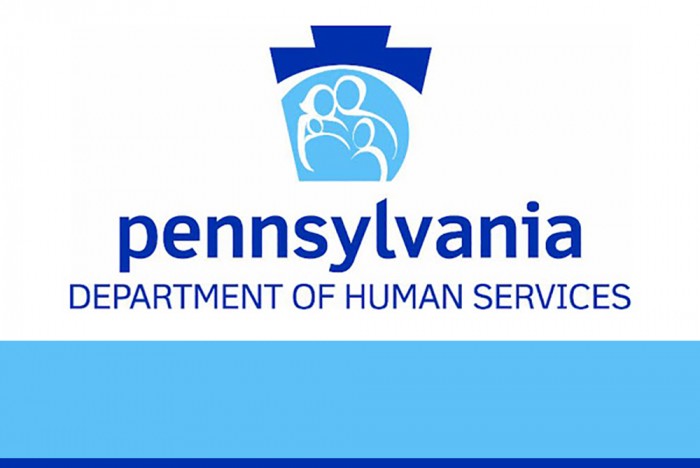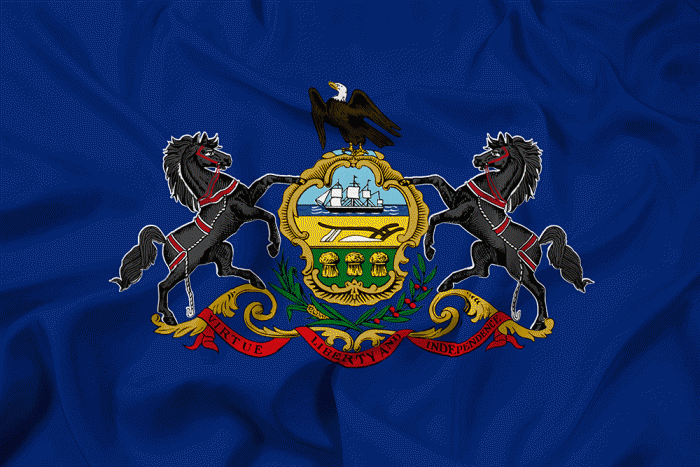Jack Phillips
U.S. Treasury Releases FAQ for Acceptable Uses of County ARP Funds
The U.S. Treasury has released an FAQ document for potential uses of the county American Rescue Plan (ARP) monies. Providers should take note of sections 2.5 through 2.11 for possible health and human services applicability.
If you have any questions, please contact Jack Phillips.
Capitolwire: Gov. Wolf’s COVID-19 Disaster Emergency Declaration Will Come to an End
Capitolwire: Gov. Wolf’s COVID-19 Disaster Emergency Declaration Will Come to an End Once PA Certifies the May 18 Primary Election Results
By Chris Comisac, Bureau Chief, Capitolwire
HARRISBURG (June 10) — Led mostly by the bodies’ Republican majorities, the state House of Representatives and Senate on Thursday approved a concurrent resolution to terminate Gov. Tom Wolf’s COVID-19 disaster emergency declaration.
Additionally, the General Assembly sent to the governor legislation that would to give executive agencies an extension, until Sept. 30 of this year, of the regulatory flexibility they have had under the governor’s COVID-19 disaster declaration for more than a year.
“The people of Pennsylvania have spoken and our members have turned their vote on May 18th into action by exercising the will of the people to immediately terminate the COVID-19 emergency disaster declaration,” said House Majority Leader Kerry Benninghoff, R-Centre, author of House Resolution 106. “With Pennsylvania rapidly returning to normal thanks to a legislative-led vaccine rollout and the need to keep our economy on a track to vigorously reopen, we did not want to wait a minute longer to terminate this emergency disaster declaration that has been responsible for so much economic devastation over the last 16 months.”
Republicans noted Wolf has already lifted nearly all of his mitigation orders, with the masking mandate to end before the end of June, while vaccination rates continue to climb as COVID-19 case numbers and hospitalizations have been dropping dramatically for several weeks – all suggesting the emergency has passed, and it’s now time for the General Assembly and governor to work together to address matters going forward.
The resolution was amended both Wednesday evening and then again Thursday morning (a technical fix to the measure) by the Senate prior to that chamber’s vote later Thursday morning, a 30-20 tally that saw one Democrat – Sen. Lisa Boscola, D-Northampton – join the Senate’s Republicans and Sen. John Yudichak, I-Luzerne, in adopting the concurrent resolution.
In a statement issued following the vote, Senate Majority Leader Kim Ward, R-Westmoreland, said: “Delivering on its promise to the people of Pennsylvania who voted ‘Yes’ on the ballots in the primary election, the Senate officially voted today to end the COVID-19 pandemic emergency declaration. A collective effort by the legislative and executive branches resulted in actions that terminated the current emergency declaration while preserving the health and safety of Pennsylvanians. The extension of waivers provides health care and economic flexibilities to protect Pennsylvania families, especially our elderly and vulnerable populations, while ending the most stringent and unnecessary restrictions still in place since the onset of the COVID-19 pandemic. This vote restores liberty by helping to reinstitute legislative powers throughout times of an emergency by giving the general assembly a seat at the table. Pennsylvanians deserve a government that works for them, and the senate looks forward to continuing to do its part to lead this effort and in the best interest of all Pennsylvanians.”
Senate Democrats, as they did Wednesday evening in committee when considering HR106, questioned the authority by which senators were voting on the resolution when the state has yet to certify the results of the May 18 primary which saw voters approve two constitutional amendments limiting some of the governor’s disaster declaration power and giving the General Assembly the ability to terminate a declaration by majority vote on a concurrent resolution by both chambers.
The results have yet to be certified by the Pennsylvania Department of State, but GOP lawmakers noted that would likely occur during the next few days, since counties had until this past Monday to certify their results to the state agency.
Concerns about the future of programs and services that have been delivered by use of executive order under the authority of the COVID-19 disaster declaration, as well as federal funding providing those services and benefits to Pennsylvanians, were likewise expressed by Democrats who claimed the emergency isn’t over, people are still suffering and it remains unknown if the COVID-19 situation could worsen as it did last year.
Some House Democrats attempted to minimize the importance or meaning of the HR106 vote – which saw eight House Democrats join all House Republicans in adopting the measure 121-81 – with House Minority Whip Jordan Harris, D-Philadelphia, repeatedly saying during his floor remarks before the vote, “This resolution does absolutely nothing.”
And Bill Patton, press secretary for House Minority Leader Joanna McClinton, D-Philadelphia, sent an email to members of the press suggesting that as reporters write about the HR106 vote, “if you happen to reference the May 18 vote on statewide ballot questions 1 and 2 please know that neither one got more than 52% approval (51.7 and 51.8 to be more precise). Slightly higher numbers were reported early on when the counting was incomplete but the latest tally is available here [Pennsylvania Elections – Summary Results (pa.gov)]. While there’s no question about the outcome on May 18, the numbers do still carry some weight. Also please bear in mind these numbers have not yet been certified.”
A source who wished to remain anonymous reacted to the comments about the constitutional amendment vote totals by pointing out President Joe Biden only received 51.3 percent of the national popular vote in the 2020 presidential election, and only 50.01 percent of Pennsylvania’s vote – with both percentages less than what was cast for the constitutional amendments on May 18 (and a slightly greater percentage opposed to Biden in Pennsylvania than those opposed to the ballot questions) – but Biden still won Pennsylvania and he’s still president.
Responding to the floor remarks of Harris and other House Democrats, Benninghoff observed during his closing remarks prior to the HR106 vote, “I think there is a little merit to wondering, at least on my part, why people have spent so much time and energy dialoging about something they say means nothing – how do you fight so much about something that means nothing? It has to mean something.”
The General Assembly’s actions seemed to mean something to the governor and his administration.
“Over the last few weeks the administration has worked hard to educate and inform the general assembly of the risks associated with ending the Covid disaster declaration prematurely,” said Wolf spokeswoman Lyndsay Kensinger in an email reacting to Thursday’s votes. “The governor is disappointed that the Republican-controlled General Assembly has not taken action to extend the disaster declaration. To avoid serious consequences, the administration will do everything it can to work with the federal government to try to maintain federal funding in the absence of a declaration. Now, when the election is certified, and the constitutional amendments become effective, the COVID-19 disaster declaration will be terminated.”
However, Kensinger said the administration welcomed the General Assembly keeping the various COVID-19 waivers put in place by his administration.
“The administration appreciates that the General Assembly agreed with the administration’s recommendations on the significance of keeping the important regulatory suspensions associated with Covid disaster declaration provisions in place,” said Kensinger. “The governor plans to sign the bill.”
The bill in question – House Bill 854 – was unanimously approved by lawmakers in both chambers Thursday, and grants an extension, until Sept. 30, 2021, existing regulatory flexibilities authorized by various executive agencies as part of the COVID-19 disaster declaration.
“Over the past 16 months, Pennsylvania’s regulatory framework has been upended,” said Benninghoff. “As our economy continues to emerge from the effects of government-induced shutdowns and our health care community continues to be reliant on existing flexibilities, I was glad to see both chambers quickly come together to effectively manage the remaining days of the pandemic.”
Regarding HB854, Sen. Yudichak said the bill “protects access to critical federal funding and waivers that benefit health and safety, such as the emergency authorization of telemedicine, temporary staffing at nursing homes and personal care homes, and other staffing issues in health care facilities.
Added Sen. Ryan Aument, R-Lancaster: “While many of the provisions in the Governor’s COVID-19 mitigation orders were overburdensome, arbitrary, and unfair, there were some provisions like the telemedicine waiver that we all agree have improved the lives of Pennsylvanians throughout the last year. We voted today to ensure that these provisions remain in place as our Commonwealth continues to recover and rebuild in the aftermath of this pandemic.”
Capitolwire: PA House Panel Approves Senate-Passed Bill to Help Disabled
By Robert Swift, Staff Writer, Capitolwire
HARRISBURG (June 9) – A Senate-passed bill to expand eligibility for a medical assistance program for working individuals with disabilities was approved unanimously Wednesday by the House Health Committee.
Members from both parties call Senate Bill 156 a bipartisan bill.
SB156 which now heads to a floor vote would increase the income eligibility limit from $32,000 to $76,000 annually so more individuals are eligible for the Medical Assistance for Workers with Disabilities (MAWD) program.
This would cover newcomers to the program and those defined as a “worker with job success” being age 16 an older, earning at least the minimum wage and meeting federal poverty income guidelines.
MAWD provides disabled workers access to home and community-based services that are important to them, but typically aren’t covered by private insurance.
The worker pays a percentage portion of their income to MAWD to cover health care.
Under SB156 sponsored by Sen. Bob Mensch, R-Lehigh, workers with the job success designation will pay 7.5 percent of their income to cover health care, a 2.5 percent increase above the current rate.
The bill would allow individuals to work to their full potential without fear of losing health benefits, said Mensch. Only 35 percent of people with disabilities are working with only 21 percent of that category working full-time, he added.
Increasing the income limit will improve the quality of life for the disabled, said Rep. Kate Klunk, R-York, sponsor of the related House Bill 1115 and of a previous bill that passed the House last session.
If SB156 is enacted, MAWD enrollment will increase by more than 1,000 individuals, according to a state Department of Human Services estimate. This is based on the number of MAWD recipients disenrolled due to being over income limits.
A Senate Appropriations Committee fiscal note estimates SB156 would cost $9.7 million with $4.6 million coming from state funds.
Lawmakers Look to Extend Waivers Under Disaster Declaration
DHS Releases Research and Resources for People with IDD, Autism and Mental Health and Behavioral Challenges
Harrisburg, PA – The Pennsylvania Department of Human Services (DHS) today released the latest issue of the Positive Approaches Journal, which aims to provide the most recent research and resources for people with mental health and behavioral challenges, intellectual disabilities, autism, and other developmental disabilities to live an everyday life. This edition focuses on sexuality and connectedness.
“Part of DHS’ mission is to ensure that people, regardless of disability, have the resources and information they need to live an everyday life. But too often, people with intellectual and developmental disabilities do not receive the support or education they need to be safe and healthy while exploring and experiencing social connections and sexuality,” said Acting DHS Secretary Meg Snead. “We hope that this edition of the Positive Approaches Journal will provide some of those resources and will chip away at myths and misconceptions about socialization and sexuality within the disability community.”
This edition features research and articles on the following:
- Embracing Inclusion: Prioritizing LGBTQIA+ Inclusion for People with Intellectual and Developmental Disabilities: This article outlines the barriers and lack of supports that LGBTQIA+ people with disabilities face and emphasizes the importance of recognizing the needs of people who live at the intersection of these two identities.
- Responding to the Victimization of Individuals with Intellectual Disabilities and Autism: This article details how sexual education and resources for people with disabilities can improve relationships and reduce the risk of victimization.
- Detangling Sexuality Information: Misinformation, Confusion or Hope: This article outlines the importance of comprehensive sexual education, as lack of such education can create a dangerous lack of understanding of consequences and a misinterpretation of sexual nuances.
- Approaching Sexuality in Service Spaces: An Invitation to Deeper Inquiry: This article explores ways both behavioral health providers and clients can express vulnerability in discussing sexuality and the sensitivities that surround it.
- Building a Socially Fulfilling Life with a Mental Health Diagnosis: A Firsthand Perspective: A Certified Peer Specialist’s personal story of how helping others in managing their mental health was a crucial part of understanding social needs and their own recovery.
- Social Skills for the “Real World”: Lessons Learned from the Autism Services, Education, Resources and Training (ASERT) Social Skills Groups: This article highlights research on effective social skills intervention methods to help caretakers address identified challenges for those with Autism Spectrum Disorder.
The journal is a collaboration of DHS’ Office of Developmental Programs and Office of Mental Health and Substance Abuse Services and collects resources, observations, and advancements in mental and behavioral health in order to better serve people with dual diagnoses in their communities.
Read this edition of the Positive Approaches Journal.
For more information visit DHS’ website.
MEDIA CONTACT: Erin James
Capitolwire: After May’s $1.6 Billion Tax Revenue Collection Overage, PA is Sitting at $2.9 Billion in Excess Revenue
Capitolwire: After May’s $1.6 Billion Tax Revenue Collection Overage, PA is Sitting at $2.9 Billion in Excess Revenue With One Month to Go in the Current Fiscal Year
By Chris Comisac, Bureau Chief, Capitolwire
HARRISBURG (June 2) — Less than a week after the state’s Independent Fiscal Office forecast Pennsylvania would end its current fiscal year with a $3.16 billion revenue surplus, the state Department of Revenue announced the commonwealth is well on its way to reaching that mark.
General Fund revenue collections for the month of May came in far stronger than originally estimated – totaling $3.9 billion, which was $1.6 billion, or 65.4 percent, ahead of expectations – mostly due to a one-month delay of the collection deadline for personal income taxes (PIT), pushing the state’s year-to-date collections to $2.9 billion, or 8.5 percent, above estimate with one more month of collections to go.
“We are also nearly $2.9 billion above our estimate for the fiscal year as of today,” said Revenue Secretary Dan Hassell on Tuesday in a press release announcing May’s General Fund Revenue collections. “This is very positive news with one month to go in the current fiscal year.”
Last week, the IFO updated its revenue forecast for the current fiscal year, FY2020-21, indicating the state’s General Fund would end the year with $1.674 billion more than the agency had estimated in January, pushing the estimated General Fund total, once June’s collections are in, to $40.111 billion, which is $3.16 billion more than was expected when the budget was finalized in November. The IFO’s report also included the agency’s initial revenue estimate for the coming fiscal year,FY2021-22, with that figure being over $2.1 billion less than what the state is expected to collect during the current fiscal year.
PIT collections totaled $1.9 billion last month, which was $1 billion, or 111 percent, more than anticipated, due to the tax filing deadline extension until May 17, more than making up for the $571.8 million shortfall experienced in April by the PIT because of the deadline extension. Through 11 months of the fiscal year, the PIT has collected $14.9 billion, which is $747.7 million, or 5.3 percent, above estimate.
While May’s revenue collection results were mostly due to the PIT, the PIT wasn’t the only revenue source performing above expectations, with those performances in most cases directly tied to the billions in federal dollars pumped into the state as part of the various COVID-19 stimulus initiatives during the past year. The IFO last week indicated there have been nearly $78 billion in direct federal payments to individual Pennsylvanians (by way of unemployment benefits and stimulus checks) during Calendar Years 2020 and 2021, along with another nearly $79 billion in federal support to businesses, as well as the state government and the commonwealth’s local levels of governments.
Revenue collections from the state’s Sales and Use Tax (SUT) continued their strong performance over the past several months, with the tax – helped by heightened consumer demand due to both additional federal dollars in people’s pockets as well as the COVID-19 virus in decided retreat prompting more people to get out and engage in economic activity – producing $1.2 billion in May, a total that was $211.8 million, or 22 percent, above estimate. Year-to-date SUT collections total $11.6 billion, which is $741.7 million, or 6.8 percent, ahead of expectations.
May corporation tax revenue collections were $163.7 million, or 61.4 percent, more than anticipated, producing a monthly total of $430.1 million, of which $417.5 million came from the state’s Corporate Net Income Tax (CNIT). For the year thus far, corporation taxes have generated $5.6 billion, which is $892.2 million, or 18.9 percent, above estimate.
An unfortunate side-effect of the past year of COVID-19 and the deaths the virus has caused has been a boost in the revenue generated by the state’s inheritance tax. In May, the tax’s collections were $136 million, which was $53.5 million, or 64.8 percent, above estimate, pushing total collections for the last 11 months of the fiscal year to $1.2 billion, which is $216.5 million, or 21.1 percent, above estimate.
The real estate market has been on fire in most areas of the nation, and Pennsylvania has been no exception. In May, the realty transfer tax produced $56.9 million in revenue, which was $14.8 million, or 35.1 percent, above estimate. Year-to-date, the tax has brought it $575.1 million, which is $95.5 million, or 19.9 percent, ahead of expectations.
The state’s “sin taxes” – including cigarette, malt beverage, liquor and gaming taxes – also continued to perform well in May, totaling $191 million in revenue, which was $24.5 million, or 14.7 percent, above estimate, pushing the fiscal-year revenue total to $1.6 billion, which is $132.3 million, or 9.1 percent, more than anticipated.
Non-tax revenue was likewise above estimate last month, by a total of $45.6 million, or a whopping 377 percent, which the IFO attributed to higher-than-expected license and fee collections, as well as other miscellaneous collections. May’s $57.7 million in collections brings the year-to-date total to $1.1 billion, which is $42.8 million, or 4 percent, above estimate.
June begins what most hope will be the homestretch toward a finalized budget for FY2021-22, though reports emanating from the state Capitol suggest there are several areas of disagreement between Democrat Gov. Tom Wolf and the Republican-controlled General Assembly, including issues related to proposed tax and spending hikes (as well as the redirection of existing education and other spending), and the appropriation of the more than $7 billion in federal COVID-19 stimulus/relief funding distributed to Pennsylvania as part of the last federal stimulus initiative.
Capitolwire: New IFO Report Indicates PA Should End FY 2020–21 With a Sizable Revenue Surplus
Capitolwire: New IFO Report Indicates PA Should End FY 2020–21 With a Sizable Revenue Surplus, But With Direct Federal Payments Ending, Things Look to be Far Different for the FY 2021–22 Budget Now in Development
By Chris Comisac, Bureau Chief, Capitolwire
HARRISBURG (May 27) – Pennsylvania’s current fiscal year should wrap up on a very positive revenue note, but the coming fiscal year could be a rocky one to negotiate for state lawmakers preparing a state budget, according to the latest revenue updates released Wednesday afternoon by the Independent Fiscal Office.
Thanks to nearly $78 billion in direct federal payments to individual Pennsylvanians during Calendar Years 2020 and 2021, along with another nearly $79 billion in federal support to businesses, as well as the state government and the commonwealth’s local levels of governments, the IFO forecasts the state’s General Fund will end with $1.674 billion more than the agency had estimated in January.
What makes that upward adjustment to $40.111 billion even more impressive is that when the IFO forecast in January the state’s General Fund would end Fiscal Year 2020-21 with $38.437 billion, that total, after applying estimated tax refunds and expected state expenditures, produced a revenue surplus of $1.481 billion.
And while there are more state expenditures to rectify than had been contemplated by the IFO in January, the total revenue surplus from which those additional expenditures will be deducted now appears as though it will be more than $3.1 billion.
It’s important to note the IFO’s revenue estimates and overall General Fund forecasts differ from those used by the state Budget Office. Revenue collections for May won’t be released until the start of June next week, but the figures for the month are expected to be in excess of estimate by a sizable amount given that the deadline for personal income tax (PIT) return filing was delayed from April 15 until May 17. That pushed into May a significant portion of PIT collections that would have been received by the state in April. Even with those delayed payments, Pennsylvania’s General Fund collections in April managed to stay slightly ahead of estimate, with the Fund, through April, having $1.3 billion more than expected.
So, while the state might not end the current fiscal year on June 30 with a surplus of more than $3.1 billion, things do appear to be trending in a positive direction.
That’s a good thing, since there’s around $1 billion in state Department of Human Services spending, in excess of approved appropriations, that will have to be paid, and having a surplus makes that easier to do. And whatever is left over may be needed to address what the IFO says will be a decidedly different story in Fiscal Year 2021-22.
The IFO initial General Fund revenue estimate for FY2021-22 is built on the expectation that once there’s an end to the massive amount of COVID-19 federal spending – much of it direct payments to individuals in the form of unemployment benefits and stimulus payments – the state’s economy, and the revenues generated from various sources, will revert back to the former path it was on prior to COVID-19.
While that doesn’t sound problematic, it is forecast by the IFO to result in FY2021-22 General Fund revenue retreating to $37.96 billion, a decline of $2.152 billion compared to FY2020-21.
That’s bit of a problem since the IFO in January projected state expenditures would hit $37.975 billion in FY2021-22, and the $37.96 billion in General Fund revenue forecast by the IFO for FY2021-22 isn’t the final amount of revenue that would be available, as tax refunds (normally around $1.3 billion) would still have to be deducted. There’s also the matter of the considerable amount of one-time revenues and expenditure offsets – approaching $5 billion – used to construct the FY2020-21 state budget, with at least a portion of that adding to the hole to be filled in FY2021-22.
Additionally, this all assumes the General Assembly doesn’t approve plans to generate additional expenditures or revenue, both of which Gov. Tom Wolf would like to do as part of the FY2021-22 budget he proposed in February.
While it remains unclear how much of a hole will have to be filled for the FY2021-22 budget to balance, it will be a daunting figure.
Of course, the state lawmakers developing the budget always seem to find ways of moving money around to fill holes, and with some amount of FY2020-21 surplus likely to be available after all the bills are paid, and potentially some amount of the $7 billion in federal COVID-19 stimulus available for budget stabilization (though lawmakers have been warned about using those federal dollars to pay for recurring expenditures), it’s not outside the realm of possibility that the hole – whatever it ends up being before the budgeteers get to it – could be made smaller or erased as has been repeatedly done in the past.
Not factored into the IFO’s revenue forecast is the more than $13 billion in federal funds from the latest round of stimulus, of which, as already noted, roughly $7 billion is coming directly to state government (the rest of which is flowing to local governments throughout the state), and has yet to be appropriated for anything.
IFO director Matt Knittel said that money could have some impact on the state’s economy, though not nearly the same effect that the nearly $78 billion in direct payments made to individual Pennsylvanians who injected quite a lot of that money directly into the state’s economy.
The IFO forecast also does not contemplate the impact of additional stimulus initiatives, such as plans to direct more federal dollars to infrastructure or other items that could provide more direct payments to Pennsylvanians.
“Bear in mind, there’s a lot of moving parts for the revenues … it’s more complicated than usual,” said Knittel at the outset of his presentation Wednesday, noting the difficulty in determining what will occur when federal dollars are no longer being injected into the state’s economy and the effect that will have on the behavior of Pennsylvanians who no longer have access to those additional federal dollars, as well as the tax shifting that could occur as businesses not only react to those dollars but also potential tax changes being considered at the federal level (with the Biden administration suggesting a repeal or at least a trimming of the business tax reductions made during the Trump administration).
The IFO report identified one of the big wildcards as employment, as the state is still well over 400,000 jobs short of where it was pre-COVID-19.
Knittel warned it’s unlikely all those Pennsylvanians currently unemployed – roughly 900,000 potential workers as of April (which excludes most high school and college students) – will find a job when their unemployment benefits run out, particularly if they wait until September when the extra federal unemployment benefit is scheduled to end.
He said many businesses have already adjusted to the current economic climate and labor market, filling some jobs with workers earning higher wages, and finding other ways to improve productivity – through such things as automation and using other forms of technology – to replace the jobs that employers can’t currently fill.
It’s possible those who wait until the fall to begin looking for jobs may find there are more people looking for jobs than there are available jobs, said Knittel, a situation that will put negative pressure on wages and ultimately impact state revenues based on personal income and consumer spending.
PA Dept. L&I Publishes Final Overtime Rule in Pennsylvania Bulletin
Note: This is just a reminder; no changes have been made to date.
Over the past week, RCPA has received some inquiries about the Pennsylvania Department of Labor & Industry (L&I) final rule regarding overtime pay under the Minimum Wage Act. Back in late fall and early winter, RCPA sent out notices informing RCPA members that the new rule would become effective January 1, 2021. RCPA is sending out this alert as a reminder to members. To view the new rule in its entirety, please visit the Pennsylvania Bulletin’s website.
The highlights of L&I’s final rule are as follows:
- Raises the salary threshold.
- Automatic increases in 2021, 2022 and 2023 and every three years thereafter (i.e. after 2023 the next increase will occur in 2026).
- The employee still must meet both the salary test and the duties test to qualify as exempt.
If you recall, the Federal Department of Labor published its final rule on Friday, September 27, 2019. The Federal rule:
- Raised the salary threshold from the current $23,660 ($455/week) to $35,568 ($684/week);
- Was effective January 1, 2020;
- Includes no automatic updates or changes to the duties test; and
- Allows nondiscretionary bonuses, incentive payments, and commissions to satisfy up to 10 percent of the salary requirement.
Please contact Jack Phillips, RCPA Director of Government Affairs, with any questions.
DHS Acting Secretary, Attorney General Encourage Pennsylvanians to Utilize Available Mental Health Resources
Harrisburg, PA – Department of Human Services (DHS) Acting Secretary Meg Snead today joined Attorney General Josh Shapiro to raise awareness and understanding of mental health and wellness, mental illness, and substance use disorders and encourage people who are experiencing these to seek help. The COVID-19 pandemic and economic crises have created anxiety and grief that are affecting all of us in different ways, but resources are available across Pennsylvania, so no one has to go through this alone.
“The past year has made each of us acutely aware of our mental health, and many of us have been struggling with feelings of fear, depression, and anxiety. It is okay to feel this way, but please know that help is available so you do not have to endure this alone,” said Acting Secretary Snead. “These feelings may seem isolating but recognizing them in yourself or a loved one can help you begin to work through and process these challenges and trauma. Clinicians have expanded the use of telehealth throughout this past year making it easier to access services. If you need help, do not hesitate to reach out.”
“I traveled across Pennsylvania to talk to students about Safe2Say, and they told me over and over that they were most concerned about their peers’ mental health,” said Attorney General Josh Shapiro. “It was important to my office that we respond to these concerns and provide students with the help they need and are asking for. As our students return to the classroom, we must continue to find innovative ways to reach young people in need, including making child protective and mental health services available 24/7.”
Pennsylvanians struggling with anxiety and other challenging emotions due to COVID-19 and the accompanying economic insecurity can contact the Persevere PA Support & Referral Helpline toll-free, 24/7 at 1-855-284-2494. For TTY, dial 724-631-5600. The helpline is staffed by skilled and compassionate caseworkers who will be available to counsel struggling Pennsylvanians and refer them to resources in their community that can further help to meet individual needs. Since its launch in April 2020, the helpline has received more than 22,900 calls.
The Attorney General’s Safe2Say program is available to Pennsylvania children and teenagers to anonymously and safely seek assistance and report threats of violence, harassment, and bullying, is also still operating and can be reached 24/7 at 1-844-723-2729 or at Safe2SayPA.
Many other resources also remain available to Pennsylvanians in need of support, including:
- National Suicide Prevention Lifeline: 1-800-273-TALK (8255)
- Línea Nacional de Prevención del Suicidio: 1-888-628-9454
- Crisis Text Line: Text “PA” to 741-741
- Veteran Crisis Line: 1-800-273-TALK (8255)
- Disaster Distress Helpline: 1-800-985-5990
- Get Help Now Hotline (for substance use disorders): 1-800-662-4357
- Pennsylvania Sexual Assault Helpline: 1-888-772-7227 or PCAR
- National Domestic Violence Helpline: 1-800-799-7233 or PCADV
Available online resources include:
- Pennsylvania’s mental health resource guide
- Mental Health America for general information and COVID-19-specific resources
- Get Help Now for substance use disorder and alcohol treatment
The pandemic has created economic uncertainties for many Pennsylvanians, making it difficult for some to access essential needs or feel secure about the future. Resources are available in your community to help address these feelings of stress and anxiety. The United Way of Pennsylvania can help connect you to resources that are available in your community to help you meet these needs. Text your zip code to 898-211 to be connected to programs and resources in your community or visit United Way of Pennsylvania. People in need of assistance can also visit Compass to learn more and apply for assistance programs that can help with health care, food, rental and utility bills, and other needs.
More information on mental health resources can be found here.
MEDIA CONTACT: Erin James
















